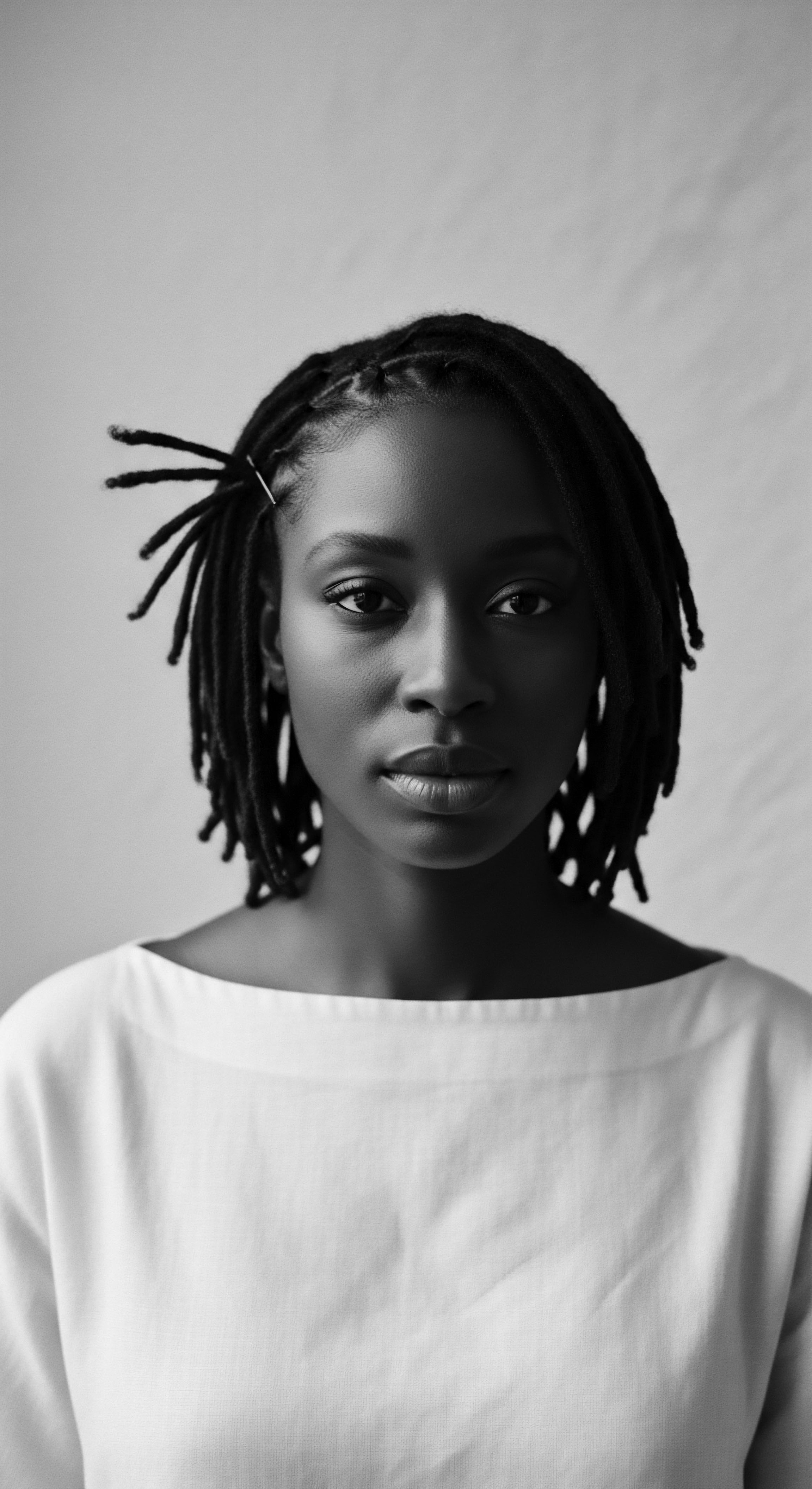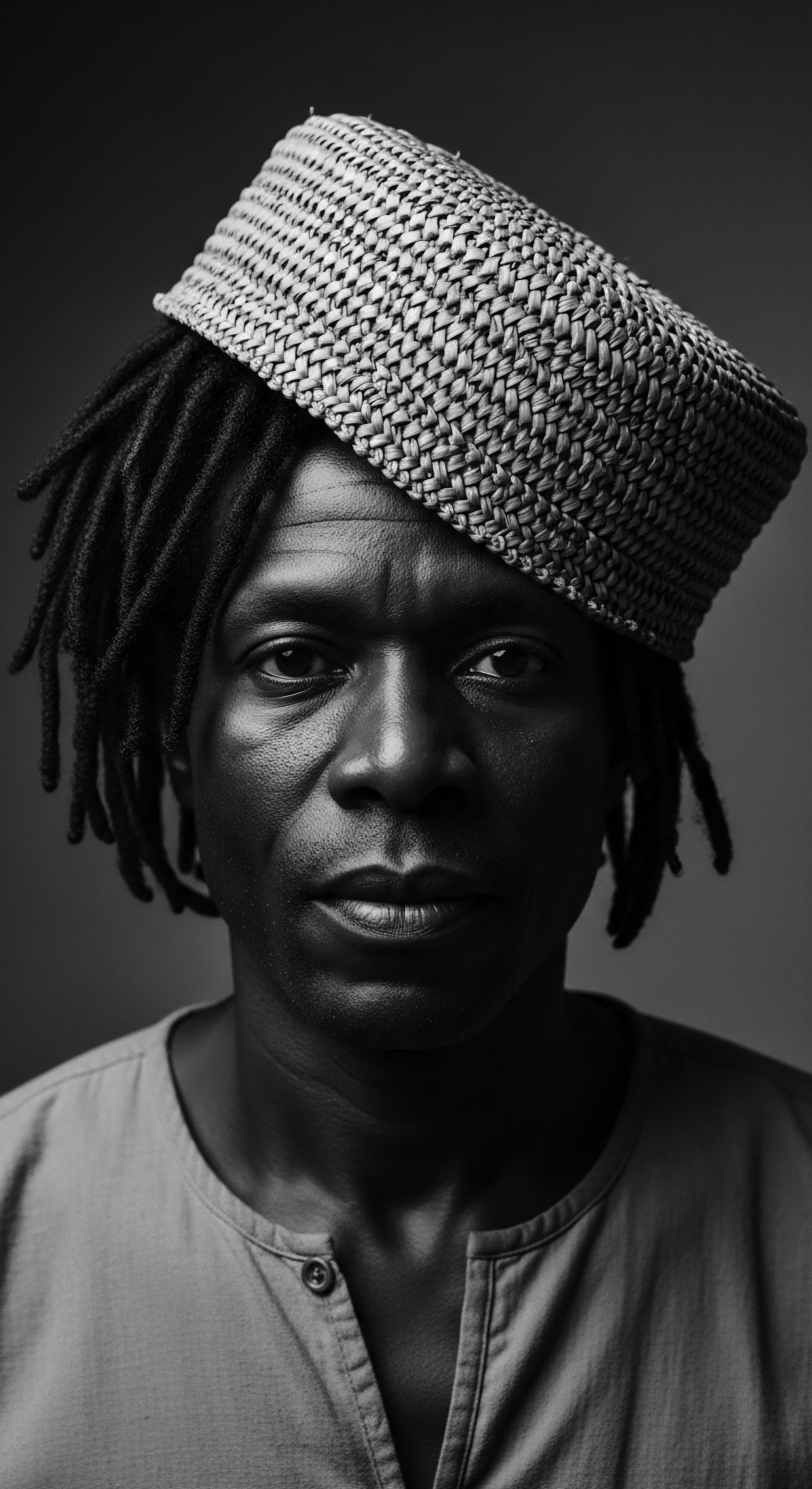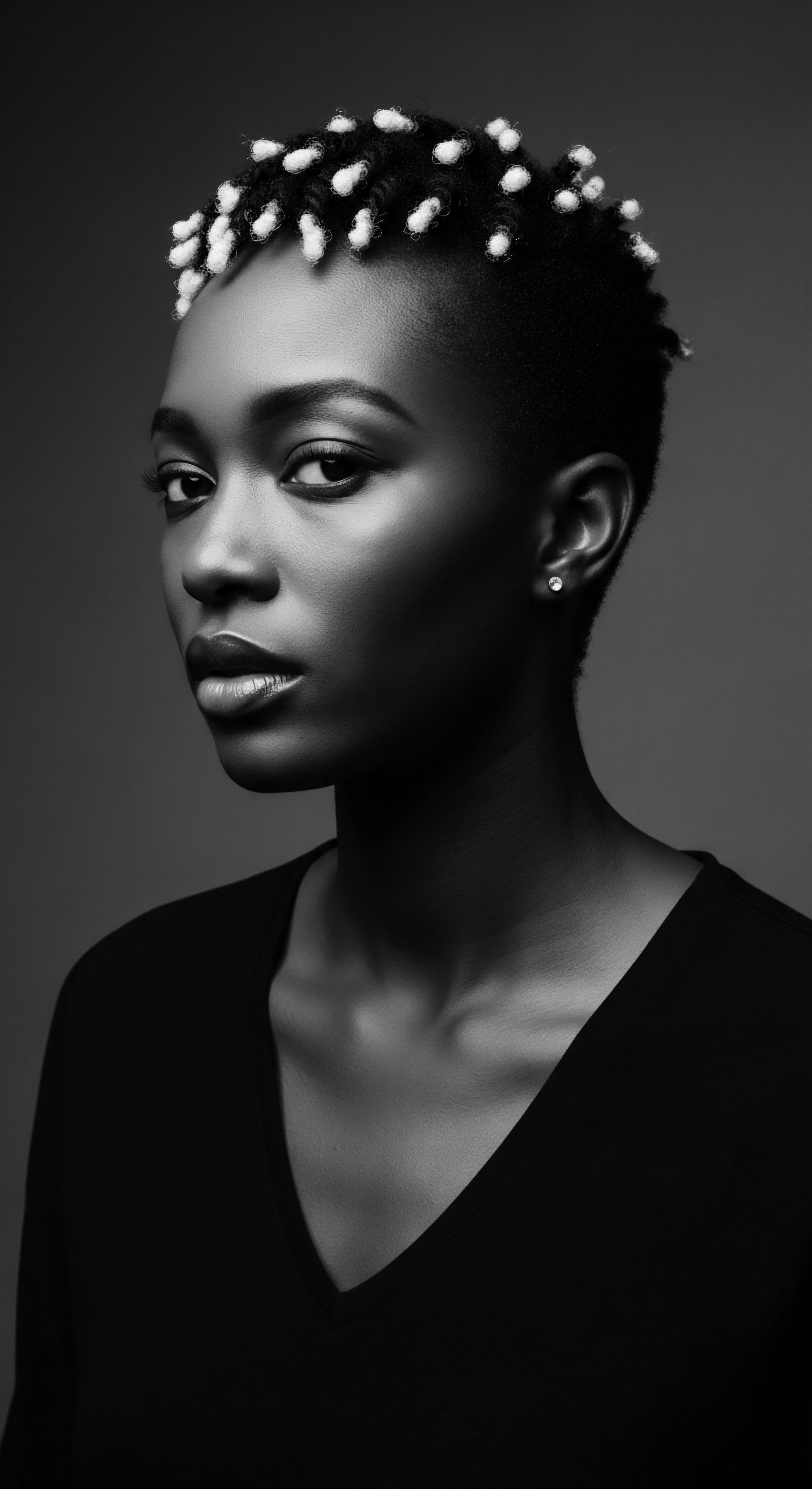
Fundamentals
The concept of Black Beauty, as understood within Roothea’s living library, reaches far beyond a simple aesthetic appreciation; it represents a profound declaration of identity, resilience, and ancestral wisdom. It is not merely a descriptor for visual appeal, but a recognition of the inherent splendor, strength, and cultural richness embodied within textured hair, particularly that which graces Black and mixed-race individuals. This understanding begins with the fundamental acknowledgement of hair as a living extension of self, a conduit for stories spanning generations, and a testament to an enduring legacy.
At its very genesis, Black Beauty in the context of hair speaks to the elemental biology that shapes each strand. It is the acknowledgement of the unique helical structure, the diverse curl patterns ranging from loose waves to tightly coiled formations, and the inherent porosity and density that distinguish textured hair. This biological reality, often misunderstood or devalued in broader society, becomes a source of celebration within this definition.
It signifies a return to appreciating the natural state of hair, recognizing its distinct requirements for nourishment and care, and honoring its singular characteristics. This foundational understanding lays the groundwork for a deeper appreciation of the Black Beauty that has always existed, even when obscured by prevailing societal norms.
Black Beauty, at its core, is the celebration of textured hair’s inherent splendor, a declaration of identity, and a repository of ancestral wisdom.
The designation of Black Beauty carries immense significance, serving as an interpretation of beauty standards that are rooted in self-affirmation rather than external validation. It is a deliberate shift, repositioning the discourse around hair from one of conformity to one of cultural pride. This meaning extends to the rituals of care, the communal gatherings for styling, and the artistic expressions woven into every braid and twist.
It highlights the ancestral practices that have preserved the health and vitality of textured hair through centuries, adapting to new environments while retaining their spiritual and communal essence. The elucidation of Black Beauty, therefore, starts with this fundamental acceptance of what naturally is, and what has always been.
The very delineation of Black Beauty also addresses the historical context of hair within diasporic communities. For generations, the hair of Black individuals was subjected to scrutiny, control, and attempts at erasure, reflecting broader systemic oppressions. To reclaim and define Black Beauty is an act of defiance and healing. It clarifies that beauty is not monolithic, nor is it dictated by Eurocentric ideals.
Instead, it asserts a sovereign standard of beauty that emanates from within Black culture and lived experience. This statement of inherent worth is a cornerstone of Roothea’s philosophy, inviting all to perceive textured hair through a lens of profound respect and admiration.
The initial exploration of Black Beauty’s meaning reveals its deep connection to the earth and its bounties, echoing practices from ancient times. Traditional remedies, often passed down orally, utilized local botanicals, natural oils, and clays to cleanse, condition, and adorn hair. These practices were not merely cosmetic; they were intertwined with health, spirituality, and social cohesion.
The very act of applying these elements to the hair was a ritual of connection to the land and to one’s lineage. This fundamental understanding grounds Black Beauty not in superficiality, but in a profound, holistic relationship with self and ancestry.

Intermediate
Moving beyond the foundational understanding, the intermediate interpretation of Black Beauty delves into its deeper cultural connotations and the enduring practices that have shaped its expression across the diaspora. This is where the concept begins to reveal its intricate connection to the “Tender Thread” – the living traditions of care and community that bind generations. The significance of Black Beauty here expands to encompass the artistry, the shared experiences, and the collective memory embedded within hair rituals. It is an exploration of how hair has served as a silent language, communicating status, spiritual beliefs, and social roles within Black and mixed-race communities for centuries.
The connotation of Black Beauty in this intermediate phase speaks to the deliberate and often innovative ways Black communities have maintained and celebrated their hair in the face of adversity. During periods of enslavement and subsequent racial discrimination, hair care became an act of quiet rebellion and cultural preservation. Simple tools and ingredients, often improvised or adapted from ancestral knowledge, became instruments of self-definition.
The painstaking process of braiding, twisting, and oiling hair was not just about hygiene; it was a powerful act of connection, a transmission of heritage from elder to youth. This deep sense of intention permeates the very essence of Black Beauty.
Black Beauty is a testament to the enduring cultural practices and communal bonds forged through shared hair rituals, a vibrant legacy passed through generations.
Consider the profound role of communal hair styling sessions, particularly among women. These gatherings were, and continue to be, spaces of intimate exchange, storytelling, and emotional support. They were informal schools where the skills of braiding, cornrowing, and twisting were taught, alongside life lessons and ancestral tales. The practice of “doing hair” transformed into a sacred ritual, a tender thread connecting individuals to their collective past and present.
The designation of Black Beauty captures the essence of these shared moments, recognizing them as vital components of cultural continuity. The implication is that hair care is not a solitary act, but a deeply communal and heritage-rich endeavor.
The purport of Black Beauty also extends to the evolution of protective styles, which served both practical and aesthetic purposes. Styles such as cornrows, bantu knots, and various forms of braiding were not only artful expressions but also ingenious methods of preserving hair health, shielding it from environmental stressors, and minimizing manipulation. These styles, deeply rooted in West African traditions, traveled across oceans and adapted to new environments, becoming visual markers of identity and resistance in the diaspora.
Each pattern and design often carried specific meanings, communicating tribal affiliation, marital status, or even spiritual devotion in their original contexts. This rich historical background contributes to the enduring significance of Black Beauty today.
The historical evolution of hair care products within Black communities offers another layer of understanding to Black Beauty. Faced with a market that largely ignored their needs, Black entrepreneurs, particularly women, pioneered their own solutions. Figures like Madam C.J. Walker and Annie Malone built empires by creating products specifically designed for textured hair, empowering Black women economically and providing tools for self-care and confidence.
This history underscores the agency and ingenuity inherent in the pursuit of Black Beauty, transforming a necessity into a thriving industry that reflected the unique needs and desires of the community. The development of these products and the practices they supported were deeply tied to the cultural self-sufficiency that emerged from a history of neglect and marginalization.
| Traditional Practice Braiding/Cornrowing |
| Historical Significance and Cultural Connection Rooted in ancient African traditions, signifying social status, tribal identity, spiritual beliefs, and artistry. Often communal, transmitting knowledge. |
| Contemporary Relevance in Black Beauty Continues as a protective style, a form of artistic expression, a connection to ancestral aesthetics, and a communal bonding ritual. |
| Traditional Practice Hair Oiling/Greasing |
| Historical Significance and Cultural Connection Utilized natural plant oils (e.g. shea butter, palm oil) for moisture, protection, and scalp health, often infused with spiritual intent. |
| Contemporary Relevance in Black Beauty Still a core practice for moisture retention, scalp nourishment, and promoting hair health, using traditional and modern formulations. |
| Traditional Practice Bantu Knots |
| Historical Significance and Cultural Connection Originating from Southern Africa, used for curling, stretching, and protecting hair. Often worn as a style in itself, signifying elegance. |
| Contemporary Relevance in Black Beauty A versatile styling technique for creating heatless curls, stretching hair, and as a distinct, culturally resonant style. |
| Traditional Practice Head Wraps/Scarves |
| Historical Significance and Cultural Connection Served as protective coverings, indicators of modesty, status, or mourning. In some contexts, a symbol of spiritual devotion or fashion. |
| Contemporary Relevance in Black Beauty Worn for protection, fashion, cultural pride, and as a creative expression of identity, linking modern style to historical practices. |
| Traditional Practice These practices embody the continuous thread of Black Beauty, demonstrating resilience and adaptation across time and geography. |
The collective memory of these practices, from the simplest oiling ritual to the most elaborate braided sculpture, shapes the contemporary understanding of Black Beauty. It is a concept that acknowledges the challenges faced by textured hair in a world that often failed to understand it, while simultaneously celebrating the triumphs of creativity, self-preservation, and communal solidarity. The essence of Black Beauty, therefore, is not static; it is a living, breathing archive of shared heritage, constantly being written and reinterpreted by each generation.

Academic
The academic definition of Black Beauty, particularly when examined through the lens of textured hair heritage, necessitates a rigorous, multi-disciplinary approach, drawing from cultural anthropology, social psychology, historical studies, and even material science. This advanced understanding moves beyond descriptive qualities to analyze the deep structures of meaning, the power dynamics inherent in its perception, and its profound impact on individual and collective identity. Here, Black Beauty is not merely a term but a complex socio-cultural construct, a site of negotiation between self-perception, communal affirmation, and external pressures. Its delineation requires an exploration of how it has been both a source of strength and a battleground for identity within the Black and mixed-race diaspora.
From an academic perspective, the significance of Black Beauty is deeply intertwined with concepts of racial identity formation and the politics of appearance. For centuries, textured hair has been a primary visible marker of Blackness, making it a focal point for both racial pride and racial prejudice. The societal devaluation of Black hair, often termed “hair bias” or “hair discrimination,” has been systematically documented, revealing its pervasive effects on educational, professional, and social outcomes. This systemic pressure often led to practices of hair alteration aimed at conforming to Eurocentric beauty standards, a phenomenon that has profound psychological and cultural ramifications.
The implication of this historical context for Black Beauty is profound. It highlights how the concept emerged not just as an internal celebration, but as a defiant counter-narrative to dominant beauty ideologies. The very act of wearing one’s natural, textured hair, or adopting styles that visibly celebrated its unique qualities, became a political statement, a reclamation of agency. Academic inquiry into this phenomenon often reveals the complex interplay between individual choice, communal solidarity, and systemic oppression.
For instance, the academic paper by Hope and Jaggers (2014) delves into the profound meaning attributed to Black hair from a cultural psychological perspective, underscoring its role in identity, self-esteem, and social belonging. They posit that for Black individuals, hair is not merely an aesthetic choice but a deeply embedded aspect of their racial and cultural identity, shaped by historical narratives and contemporary experiences. (Hope & Jaggers, 2014) This scholarly interpretation reinforces that Black Beauty is not a superficial concept, but a core component of psychological well-being and cultural affirmation.
The study of Black Beauty also involves analyzing its economic dimension, a testament to Black entrepreneurial spirit in the face of systemic neglect. The Black hair care industry, often overlooked by mainstream economic analyses, represents a powerful example of self-sufficiency and community-driven innovation. From the early 20th century, Black women developed and distributed products tailored to their unique hair needs, creating wealth within their communities and providing essential resources.
This historical trajectory reveals that the pursuit of Black Beauty was not merely about personal grooming; it was an economic engine, a source of employment, and a pathway to collective empowerment. The enduring legacy of these ventures underscores the deep connection between economic independence and the ability to define and celebrate one’s own standards of beauty.
The interconnectedness of Black Beauty with ancestral practices is another crucial area of academic examination. Ethnobotanical studies, for example, have meticulously documented the traditional use of various plants, oils, and minerals in African hair care rituals. These studies often validate the efficacy of practices passed down orally through generations, showing how modern scientific understanding can align with ancient wisdom.
The academic analysis of these practices moves beyond romanticized notions, offering a grounded understanding of their chemical properties, their effects on hair structure, and their historical evolution. This deepens the meaning of Black Beauty by demonstrating its roots in empirically sound, time-tested methodologies that predated modern cosmetology.
The concept of “The Unbound Helix” emerges powerfully within this academic context, representing the ongoing journey of Black Beauty in shaping futures. It signifies the breaking of historical constraints and the boundless potential for self-expression and cultural innovation through hair. This involves examining contemporary movements like the natural hair movement, which, while seemingly modern, are deeply rooted in ancestral calls for authenticity and self-acceptance.
Scholars explore how these movements contribute to a broader redefinition of beauty, challenging established norms and fostering a more inclusive global aesthetic. The continued evolution of Black Beauty, therefore, is a dynamic process, constantly re-shaping perceptions and expanding the very definition of what is considered beautiful.
One area for deep analysis within this academic framework is the long-term psychological consequences of hair discrimination and the counter-narratives of Black Beauty. Studies have shown that individuals experiencing hair discrimination often report lower self-esteem, increased anxiety, and a diminished sense of belonging. The continuous societal pressure to alter natural hair textures to fit professional or social norms creates a persistent burden, impacting mental health and career trajectories. The deliberate assertion of Black Beauty, through the embrace of natural styles and traditional practices, serves as a protective factor against these negative psychological impacts.
It provides a source of affirmation, a connection to a supportive community, and a powerful symbol of resistance against oppressive beauty standards. This academic lens allows for a deeper appreciation of Black Beauty not just as an aesthetic choice, but as a vital component of psychological resilience and cultural survival. The long-term success insights derived from this perspective highlight that policies like the CROWN Act, which prohibit discrimination based on hair texture and protective styles, are not merely legal reforms but crucial interventions for promoting mental well-being and equitable opportunities for Black individuals. The sustained effort to validate and celebrate Black Beauty thus carries profound implications for societal equity and individual flourishing, demonstrating how cultural recognition directly impacts human experience.
- Identity Affirmation ❉ The act of embracing natural hair textures and traditional styles directly counters historical narratives of devaluation, reinforcing a positive self-image rooted in cultural heritage.
- Community Solidarity ❉ Shared hair experiences and mutual support within Black hair communities provide a buffer against external discrimination, fostering a sense of belonging and collective strength.
- Economic Empowerment ❉ Supporting Black-owned hair care businesses strengthens community economies and reinforces self-sufficiency, offering tangible benefits beyond personal aesthetics.
- Cultural Preservation ❉ Maintaining ancestral hair practices ensures the continuity of knowledge, skills, and artistic expressions, linking present generations to their historical lineage.
The comprehensive understanding of Black Beauty, therefore, necessitates an examination of its complex interplay with history, psychology, economics, and cultural identity. It is a concept that challenges conventional notions of beauty, demanding a more expansive and inclusive framework that acknowledges the unique experiences and profound heritage of textured hair. This academic exploration reveals that Black Beauty is a dynamic, living concept, continually being shaped by past struggles, present affirmations, and future aspirations.

Reflection on the Heritage of Black Beauty
As we close this meditation on Black Beauty, its profound echoes resonate through the very fiber of our understanding of textured hair. This is not a static definition confined to pages, but a vibrant, evolving story etched into the soul of every strand. The journey from elemental biology to the boundless expressions of identity reveals a continuous thread of resilience, creativity, and ancestral wisdom. Black Beauty, at its heart, is a testament to the enduring spirit of communities who have consistently found grace and power in their authentic selves, often against immense odds.
The legacy of Black Beauty reminds us that hair is more than mere adornment; it is a profound keeper of heritage, a living archive of triumphs and tribulations. It embodies the knowledge passed down through generations, the communal bonds forged over styling sessions, and the quiet strength of self-acceptance. The beauty that springs from textured hair is a declaration of inherent worth, a reclamation of narratives, and a celebration of a distinct and powerful lineage. It speaks to the deep-seated human need for connection – to our past, to our community, and to the very essence of who we are.
This exploration of Black Beauty serves as an invitation to look deeper, to listen to the whispers of history held within each coil and curl. It is a call to honor the ingenuity of ancestral practices, to recognize the profound psychological impact of cultural affirmation, and to participate in the ongoing narrative of self-definition. The unbound helix of textured hair continues its dance, carrying forward the rich heritage of Black Beauty, inspiring future generations to find their own authentic expressions within its magnificent story.

References
- Byrd, A. & Tharps, L. (2001). Hair Story ❉ Untangling the Roots of Black Hair in America. St. Martin’s Press.
- Hope, E. C. & Jaggers, C. R. (2014). The Meaning of Black Hair ❉ A Cultural Psychological Perspective. Journal of Black Studies, 45(4), 350-372.
- Mercer, K. (1994). Welcome to the Jungle ❉ New Positions in Black Cultural Studies. Routledge.
- Patton, T. O. (2006). African American Hair ❉ A History of Hair in African American Culture. In The Oxford Encyclopedia of African American History. Oxford University Press.
- Porter, N. (2006). Black Feminism, Hair Politics, and the Natural Hair Movement. Feminist Studies, 32(3), 570-588.
- West, C. (2008). African American Women and Hair ❉ Is It More Than Just Hair? In Black Women in the United States ❉ An Historical Encyclopedia. Indiana University Press.
